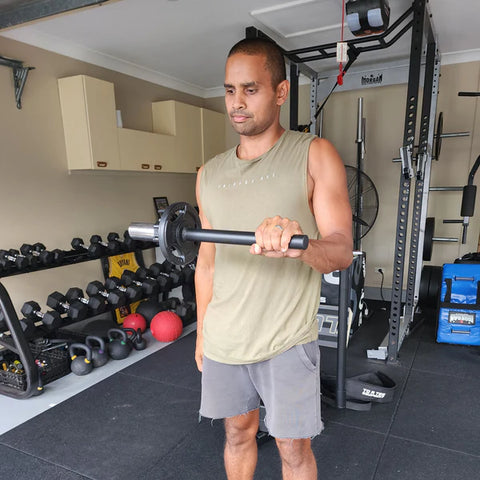
Innovative Uses for the Wrist Bar: Enhance Your Wrist Strength and Flexibility
Explore six innovative exercises using the Wrist Bar to enhance your wrist strength, flexibility,...
As we age, our bodies require a little more care and attention to stay strong, mobile, and pain-free. Once you hit 30, prioritising prehab (preventative rehabilitation) and injury prevention becomes crucial for maintaining performance and reducing the risk of setbacks. By focusing on key areas of the body in a structured sequence—from toes to hips—you can build resilience, improve movement patterns, and ensure long-term fitness success. Let’s break it down step by step.
Your toes are often overlooked, but they play a vital role in balance, stability, and force generation. Weak or immobile toes can disrupt your entire kinetic chain, leading to issues further up the body.
Key Exercises:
Toe Spreads: Sit or stand and actively spread your toes apart, holding for a few seconds before relaxing. This strengthens intrinsic foot muscles.
Towel Scrunches: Place a small towel on the floor and use your toes to scrunch it up. This improves toe dexterity and grip strength.
Toe Raises: Stand barefoot and lift just your big toes, keeping the others grounded, then reverse. This promotes toe independence and foot arch support.
Why It Matters: Strong and mobile toes improve balance and prevent overcompensation injuries in the feet and ankles.
Your feet are the foundation of movement, absorbing impact and transferring force during every step, jump, and lift. Weak arches or restricted ankle mobility can lead to plantar fasciitis, shin splints, and knee pain.
Key Exercises:
Slant Board Calf Raises: Strengthen your calves and improve ankle mobility. Focus on slow, controlled reps.
Foot Rolling: Use a massage ball to roll the soles of your feet, reducing tension and improving tissue health.
Ankle Dorsiflexion Stretches: Stretch the ankle by placing your foot on a raised surface and gently pressing your knee forward.
Why It Matters: Healthy feet and ankles provide the stability needed for higher-intensity activities and reduce strain on the knees.
Knee pain is one of the most common complaints for those over 30. Weakness or imbalances in surrounding muscles often contribute to discomfort and injury risk.
Key Exercises:
Terminal Knee Extensions (TKEs): Using a resistance band, extend your knee against resistance to strengthen the quads and protect the joint.
Step-Downs: Step down slowly from a small platform to target eccentric strength in the quads.
Backward Walking: Walk backwards on a treadmill or flat surface to strengthen the knees and improve stability.
Why It Matters: Strong knees reduce the risk of common injuries like ACL tears and patellar tendonitis.
The hamstrings are crucial for hip extension, knee flexion, and overall lower-body power. Weak or tight hamstrings can increase the risk of strains and impact athletic performance.
Key Exercises:
Nordic Hamstring Curls: Anchor your feet and lower your upper body forward while keeping your core engaged. This builds eccentric strength.
Single-Leg Deadlifts: Focus on slow, controlled movement to target the hamstrings and glutes.
Glute Bridges: Engage the posterior chain while minimising strain on the lower back.
Why It Matters: Strong hamstrings improve sprinting, jumping, and lifting mechanics, reducing the risk of tears or strains.
Tight or weak hips can lead to compensations that strain the lower back, knees, and ankles. Maintaining hip mobility and strength is essential for functional movement.
Key Exercises:
90/90 Hip Rotations: Sit on the floor with both legs bent at 90 degrees and rotate side to side to improve mobility.
Hip Thrusts: Strengthen the glutes, which are the primary stabilisers of the hips and lower back.
Cossack Squats: Improve lateral hip mobility and strengthen adductors.
Why It Matters: Healthy hips enhance power output and support efficient movement patterns, reducing injury risk.
While focusing on individual areas is important, integrating these exercises into a holistic routine ensures the entire body functions as a cohesive unit. Consistency is key—dedicate time to prehab exercises two to three times a week and adjust intensity based on your fitness level and goals.
By starting with your toes and working your way up to your hips, you’ll not only address weak links but also create a robust foundation for all types of training. Whether you’re lifting weights, running, or playing sports, prioritising prehab after 30 is a game-changer for longevity and performance.
Take Action: Start your prehab journey today with these exercises and reap the rewards of stronger, pain-free movement for years to come.